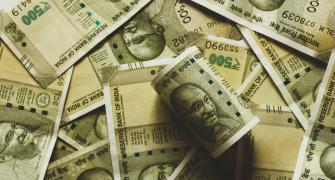In the past three months, global asset prices have rebounded sharply: stock prices have increased by more than 30 per cent in advanced economies, and by much more in most emerging markets.
Prices of commodities -- oil, energy, and minerals -- have soared; corporate credit spreads (the difference between the yield of corporate and government bonds) have narrowed dramatically, as government-bond yields have increased sharply; volatility (the "fear gauge") has fallen; and the dollar has weakened, as demand for safe dollar assets has abated.
But is the recovery of asset prices driven by economic fundamentals? Is it sustainable? Is the recovery in stock prices another bear-market rally or the beginning of a bullish trend?
While economic data suggests that improvement in fundamentals has occurred -- the risk of a near depression has been reduced; the prospects of the global recession bottoming out by year end are increasing; and risk sentiment is improving -- it is equally clear that other, less sustainable factors are also playing a role.
Moreover, the sharp rise in some asset prices threatens the recovery of a global economy that has not yet hit bottom. Indeed, many risks of a downward market correction remain.
First, confidence and risk aversion are fickle, and bouts of renewed volatility may occur if macroeconomic and financial data were to surprise on the downside -- as they may if a near-term and robust global recovery (which many people expect) does not materialise.
Second, extremely loose monetary policies (zero interest rates, quantitative easing, new credit facilities, emissions of government bonds, and purchases of illiquid and risky private assets), together with the huge sums spent to stabilise the financial system, may be causing a new liquidity-driven asset bubble in financial and commodity markets.
For example, Chinese state-owned enterprises that gained access to huge amounts of easy money and credit are buying equities and stockpiling commodities well beyond their productive needs.
The risk of a correction in the face of disappointing macroeconomic fundamentals is clear. Indeed, recent data from the United States and other advanced economies suggest that the recession may last through the end of the year.
Worse, the recovery is likely to be anaemic and sub-par -- well below potential for a couple of years, if not longer -- as the burden of debts and leverage of the private sector combine with rising public sector debts to limit the ability of households, financial firms, and corporations to lend, borrow, spend, consume and invest.
This more challenging scenario of anaemic recovery undermines hopes for a V-shaped recovery, as low growth and deflationary pressures constrain earnings and profit margins, and as unemployment rates above 10 per cent in most advanced economies cause financial shocks to re-emerge, owing to mounting losses for banks' and financial institutions' portfolios of loans and toxic assets.
At the same time, financial crises in a number of emerging markets could prove contagious, placing additional stress on global financial markets.
The increase in some asset prices may, moreover, lead to a W-shaped double-dip recession. In particular, thanks to massive liquidity, energy prices are now rising too high too soon.
The role that high oil prices played in the summer of 2008 in tipping the global economy into recession should not be underestimated.
Oil above $140 a barrel was the last straw -- coming on top of the housing busts and financial shocks -- for the global economy, as it represented a massive supply shock for the US, Europe, Japan, China and other net importers of oil.
Meanwhile, rising fiscal deficits in most economies are now pushing up the yields of long-term government bonds. Some of the rise in long rates is a necessary correction, as investors are now pricing a global recovery.
But some of this increase is driven by more worrisome factors: the effects of large budget deficits and debt on sovereign risk, and thus on real interest rates; and concerns that the incentive to monetise these large deficits will lead to high inflation after the global economy recovers in 2010-11 and deflationary forces abate.
The crowding out of private demand, owing to higher government-bond yields -- and the ensuing increase in mortgage rates and other private yields -- could, in turn, endanger the recovery.
As a result, one cannot rule out that by late 2010 or 2011, a perfect storm of oil above $100 a barrel, rising government-bond yields, and tax increases (as governments seek to avoid debt-refinancing risks) may lead to a renewed growth slowdown, if not an outright double-dip recession.
The recent recovery of asset prices from their March lows is in part justified by fundamentals, as the risks of global financial meltdown and depression have fallen and confidence has improved. But much of the rise is not justified, as it is driven by excessively optimistic expectations of a rapid recovery of growth towards its potential level, and by a liquidity bubble that is raising oil prices and equities too fast too soon.
A negative oil shock, together with rising government-bond yields, could clip the recovery's wings and lead to a significant further downturn in asset prices and in the real economy.
The author is Professor of Economics at the Stern School of Business, New York University, and Chairman of RGE Monitor (rgemonitor.com)








